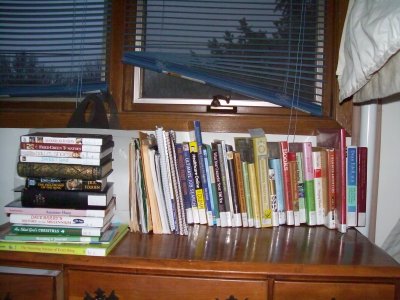What if some of your emotional and psychological problems aren’t just a medical problem–what if sin is playing a role?
Dr. William Backus challenges the common assertion that all psychological illnesses are merely a physical or medical phenomenon in this fascinating treatise on the seven deadly sins. Note the word “merely” carefully. Backus does believe that true psychological illnesses do exist–problems that are medical or biochemical in nature and require medical treatment. But, he argues in this book that many psychological illnesses also have a component of sin co-existing with, and often intensifying the effects of, that psychological illness.
One might think that a book about sin would be a book filled with condemnation. What Your Counselor Never Told You is anything but. Backus does more than encourage his readers to examine themselves regarding sin–he also offers his readers practical steps for getting out of sin.
Backus’s stresses repentance and reliance on Christ as the most important step in becoming free from besetting sin. Then, he speaks of “three important rules for success”. First, he encourages his clients to “check [their] Spirit-given internal speech”. Basically, he is saying that we should choose to listen to the Spirit of God rather than the sin-driven self-talk. Second, he encourages his client to “choose incompatible behavior.” If greed is your problem, learn to practice charity. If pride is your problem, choose to praise others. If envy is your problem, choose to rejoice in others’ fortune. The third principle Backus speaks of is “zealous determination.” Here, he says that we really need to WILL to overcome sin. We need to decide that we are no longer WILLing to let sin have mastery over us.
As someone who has struggled with seasonal depression, which certainly has a physical and biochemical link, I struggled a little with the discussion of depression in this book. Backus’s studies have found depression to be highly correlated with the Deadly Sin of Sloth. I struggled with this chapter because I experienced such a rapid and life-altering response to beginning antidepressant medication that I felt sure that MY condition was ONLY the result of biochemistry and had nothing to do with sin in my life.
But as I read Backus’s discussion of depression and sloth, I became more and more convinced that this information, however difficult it might be, is vitally important for anyone who suffers from depression. Backus does not downplay the role of the psychological and clinical diagnosis depression–but he challenges the idea that all depression is “nothing but” biochemical. Backus describes sloth as “sadness and apathy in the face of spiritual good.”
At least from my reading, Backus seems to suggest that many individuals use the real, biochemical, clinical depression as an excuse for sinful thoughts and behaviors. Often depressed individuals assume that because of the feelings brought on by the depression, they have no choice in the matter–and they give in to apathy, slothfulness, and a sinful view of God and His blessings.
I think of Romans 1:21 and begin to see how Backus’s assertion has been true in my own life: “because, although they knew God, they did not glorify Him as God, nor were thankful, but became futile in their thoughts, and their foolish hearts were darkened.” There were certainly times when, in the depths of my depression, I turned my eyes from Christ. Even though I KNEW Him, even though I had EXPERIENCED His great love, I turned my eyes to my feelings and was not thankful–and it led me to increasingly futile and dark thoughts. At that point, my condition went from merely the biochemical seasonal affective disorder to the spiritual sin of despair. Marilla Cuthbert was right when she said, “To despair is to turn our backs on God.” The sin of sloth is when I look at my circumstances or feelings as greater than God and His mercies and despair.
While Backus’s book is undoubtedly not perfect, I think it is a worthwhile read for any Christian–particularly for those who suffer from or have friends or family who suffer from a psychological illness. This book can raise questions that can allow you to begin to truly take your thoughts captive to the obedience of Christ. And, if you gain nothing else from this book, Backus’s three step “plan” for freedom from sin include some of the most simple and powerful concepts I have ever seen in relation to overcoming the power of sin. I highly recommend this book.
Rating: 5 stars
Category: Psychology/Christian
Summary:Dr. William Backus discusses psychology and the 7 deadly sins.
Recommendation: A thought-provoking, and spiritually adept discussion of psychology and sin. I highly recommend this title.










